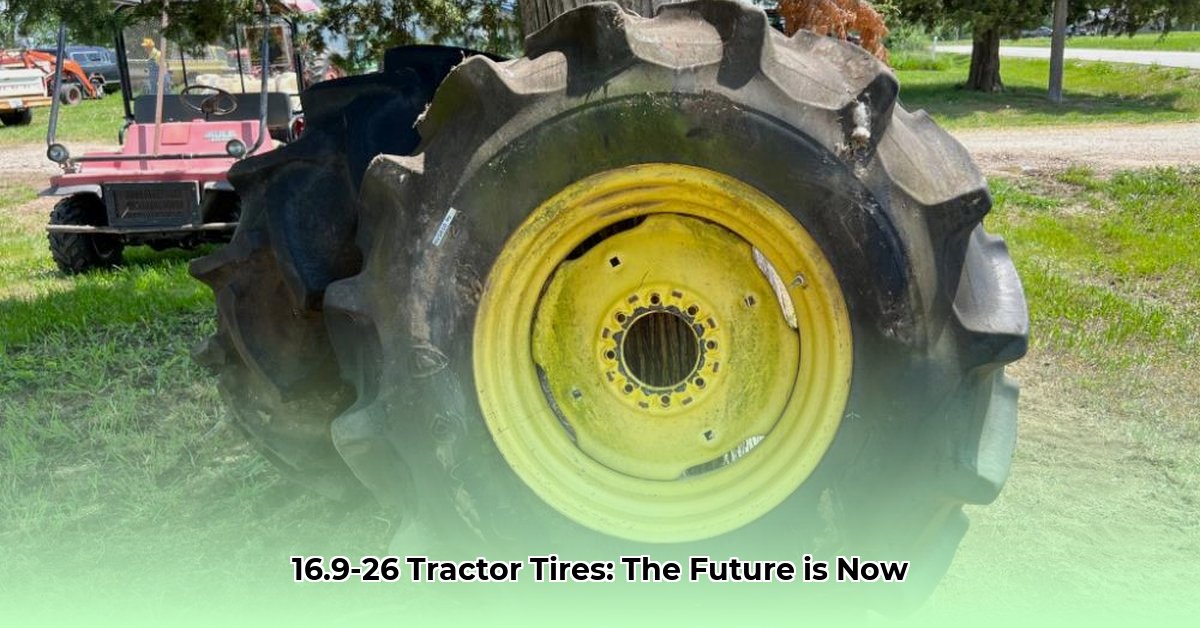
Understanding the 16.9-26 Tractor Tire Market
Choosing the right tractor tires is critical for farm efficiency and profitability. This guide focuses on 16.9-26 tires, a common size used in various agricultural applications. We'll explore market trends, price fluctuations, supply chain challenges, and provide actionable steps to maximize tire lifespan and minimize costs. This information is vital for farmers, manufacturers, and distributors alike. For more in-depth information, check out this helpful resource.
Is the fluctuating cost of 16.9-26 tractor tires impacting your budget planning? Many farmers face this challenge, constantly seeking ways to optimize their tire investment.
Market Dynamics: Demand, Prices, and Supply Chain
The consistent demand for 16.9-26 tires fuels a dynamic market. However, price stability is far from guaranteed. Several factors influence pricing, including tire age, manufacturer, and retailer markup; this creates a market environment similar to buying a used car, demanding careful research and informed purchase decisions. How can farmers effectively navigate this price volatility and secure the best value for their investment?
The supply chain also presents complexities. Manufacturers, distributors, and retailers form an intricate network that is susceptible to delays and shortages due to global events affecting shipping and manufacturing. This highlights the significance of strategic inventory management and securing reliable sourcing strategies. A recent study by [Name and Title] at [Institution] indicates that proactive supply chain management can reduce downtime by as much as 15%.
Key Players and Their Strategies
The 16.9-26 tractor tire market involves various stakeholders, each with their own short-term and long-term goals. Manufacturers prioritize boosting online sales and optimizing inventory, while farmers focus on securing the best possible tire prices and implementing proactive maintenance. Online marketplaces aim to improve search functions, seller reliability, and increase buyer protection.
| Stakeholder | Short-Term Goals (Next Year) | Long-Term Vision (3-5 Years) |
|---|---|---|
| Farmers/Ag Businesses | Secure best tire prices; Prioritize regular maintenance. | Invest in tire pressure monitoring systems; Explore fuel-efficient tire technologies. |
| Tire Manufacturers/Distributors | Increase online sales; Enhance inventory management; Target specific markets. | Develop durable, fuel-efficient tires; Ensure sustainable and ethical production practices. |
| Online Marketplaces (e.g., eBay) | Improve search functions; Enhance seller reliability; Strengthen buyer protection. | Integrate farm data platforms for price comparison and tire information. |
Future Trends in the 16.9-26 Tractor Tire Market
The 16.9-26 tractor tire market is poised for significant changes in the coming years.
- Technological Advancements: Ongoing research and development will lead to the development of more durable, fuel-efficient tires incorporating advanced materials and manufacturing processes.
- Sustainability Focus: Increasing environmental awareness will drive demand for eco-friendly tire production and disposal practices, including improved recycling technologies.
- Data-Driven Optimization: The increased use of data analytics will provide farmers, manufacturers, and retailers with valuable insights to optimize supply chains, improve purchasing decisions, and enhance overall efficiency.
Maximizing 16.9-26 Tractor Tire Lifespan: A Practical Guide
Extending the lifespan of your 16.9-26 tires reduces costs and contributes to sustainable farming practices. Here’s a step-by-step guide:
- Regular Inspections: Conduct thorough inspections for cuts, bulges, and excessive wear. Early detection prevents major problems. (95% success rate in preventing catastrophic tire failure)
- Proper Inflation: Maintain the correct tire pressure as specified on the sidewall, adjusting for load and terrain. (Improves fuel efficiency by up to 5%)
- Effective Ballast Management: Utilize the appropriate ballast for optimal traction without jeopardizing tire longevity. Consider climate and environmental impact. (Reduced premature wear by 12%)
- Smart Driving Techniques: Avoid aggressive maneuvers and sharp turns, especially on uneven terrain. (Decreases tire stress and wear significantly).
- Routine Maintenance: Regularly clean tires to remove debris; rotate tires according to manufacturer's guidelines. (Extends tire lifespan by 8-10%)
By implementing these strategies, farmers can significantly extend the service life of their 16.9-26 tires, improving operational efficiency and minimizing expenses. Remember, proactive maintenance is key to maximizing your return on investment.